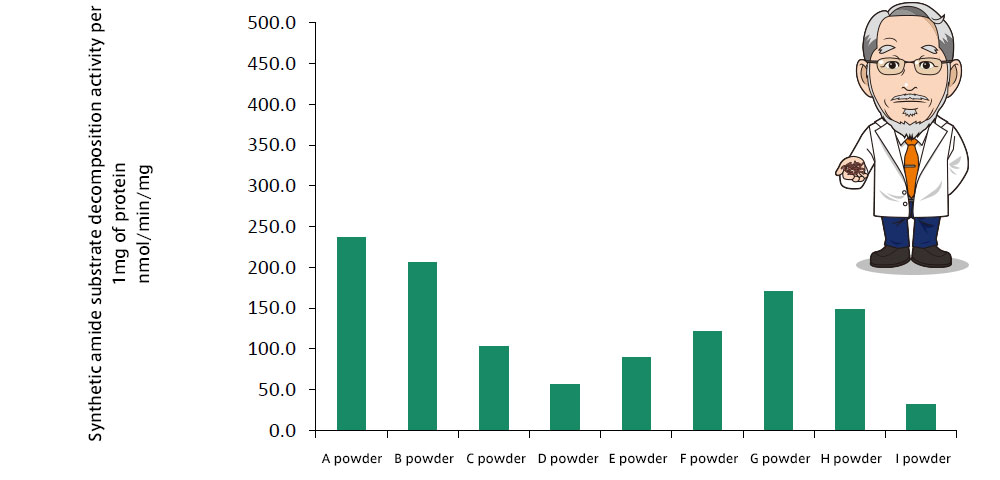
Differences in fibrinolytic activity can be seen simply by changing the feed mixture. It changes according to environment, feed and breeding method. This enables breeding according to end-use.
Substrates and enzymes have a key-keyhole relationship which are specifically reactive to certain substrates due to the structure of enzymes. Color former added to synthetic amide substrate (pNA) is extricated (hydrolyzed by enzymes and pNA is separated) due to enzyme reaction, and the better the enzyme and substrate selectivity (sensitivity), the greater the reaction liquid is colored by pNA. The worse the enzyme and substrate selectivity, the lower the amount of coloring.
By comparing as a standard the amount of protein (converted on this occasion by bovine serum albumin according to the Bradford method) included in a solution, errors in solution concentration (weighing deviation) can be minimized. Active comparisons cannot be performed if it is not a standard amount.
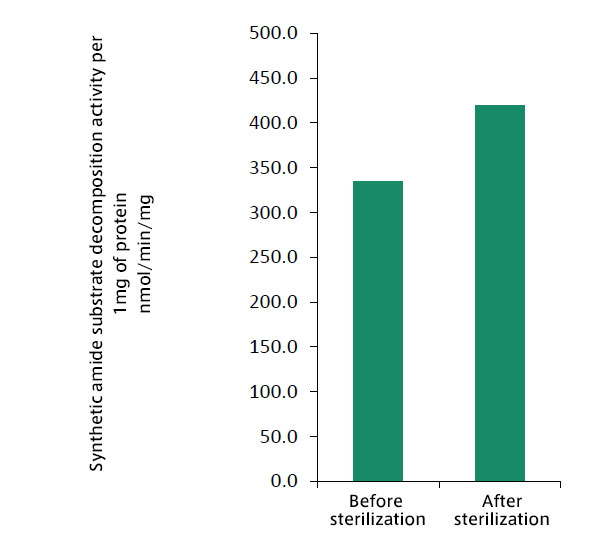
Even when bulk powder is heat sterilized, fibrinolytic activity (fibrin decomposition, synthetic amide substrate decomposition) is not enzyme-deactivated due to heat and the constituent remains. Patent No. 4886017 (heat treatment)
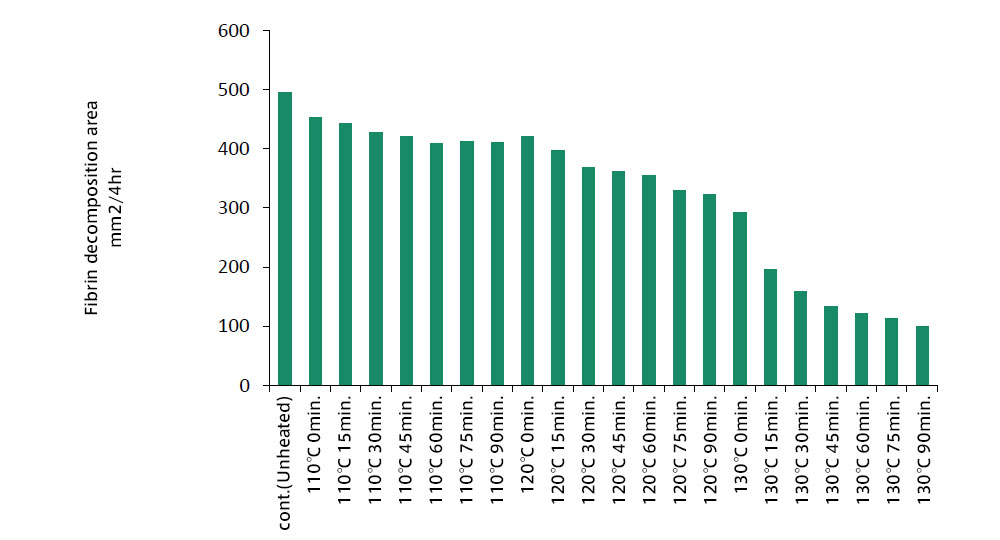
If the heat sterilization temperature and time is 120℃ and short respectively, fibrinolytic activity (fibrin decomposition, synthetic amide substrate decomposition) is not enzyme-deactivated due to heat and the constituent remains.
| Time (min.) |
Heating temperature (℃) |
Fibrin decomposition area (mm2) |
Bacterial count (CFU/g) |
Coliform group (CFU/g) |
Thermoduric bacteria group (CFU/g) |
|---|---|---|---|---|---|
| 0 | 0 | 479.6 | 94000 | Negative | 3500 |
| 30 | 120 | 373.8 | 440 | Negative | 10 |
| 45 | 120 | 370.0 | 400 | Negative | Not detected |
| 60 | 120 | 369.3 | 220 | Negative | Not detected |
| 75 | 120 | 365.4 | 160 | Negative | Not detected |
Bacterial count analysis was performed by Seikan Co., Ltd.
The bactericidal effect on coliform group etc. is better even when heat sterilization treatment is performed at 120℃ for a short time.

| 1 hour | 2 hour | 3 hour | 4 hour | |
|---|---|---|---|---|
| A : Old SK powder | 110.2mm2 | 184.0mm2 | 261.3mm2 | 333.6mm2 |
| B : SK powder | 124.0mm2 | 206.4mm2 | 290.1mm2 | 369.3mm2 |
| C : New SK powder | 123.7mm2 | 209.1mm2 | 292.2mm2 | 368.4mm2 |
As raw material powder processing technology advances, the size of fibrin decomposition tends to be maintained or increased. However, because it is a visual measurement, the fibrin decomposition area changes according to the fibrin plate condition or the way the test solution is placed on the fibrin. It is therefore necessary to perform an enzymatic test as well as a visual one. So, we will quantify this by the synthetic substrate decomposition method according to enzyme and substrate specific reaction and measure enzyme titer. This method will establish an enzymatic international unit etc.
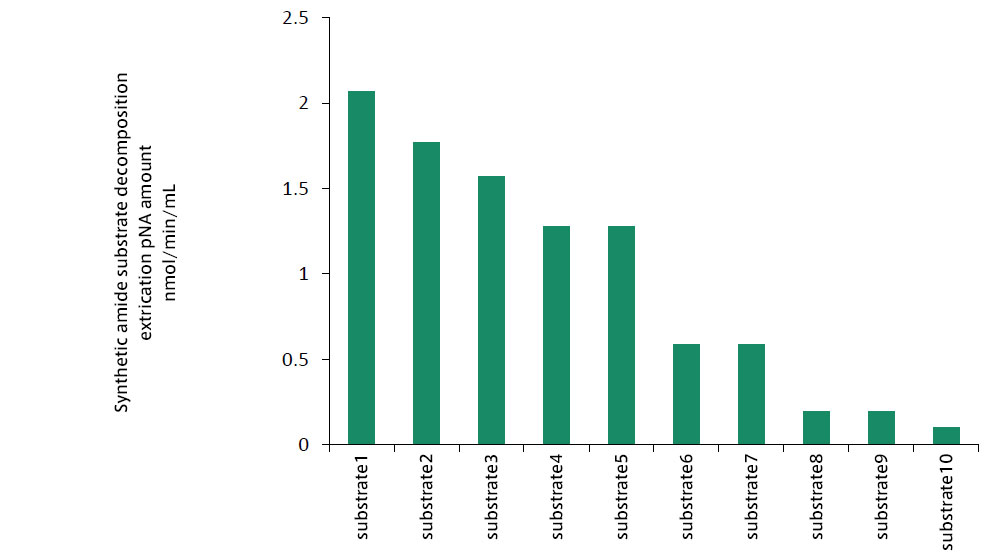
We selected substrate 1, which is the most excellent in terms of substrate specificity, and tested the fibrinolytic system titer.
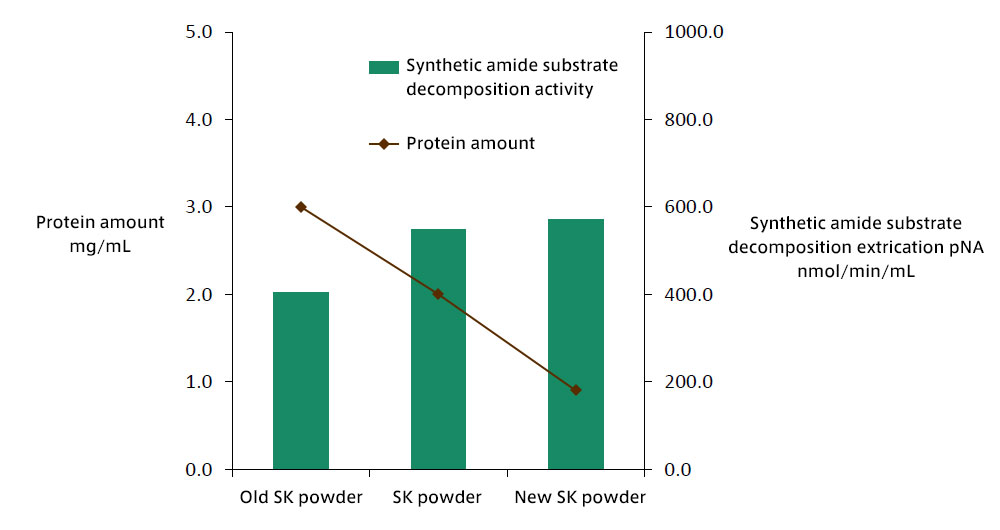
In line with advances in bulk powder processing technology, the amount of protein has decreased. It seems that protein, which is not needed for fibrinolytic activity, has been removed.
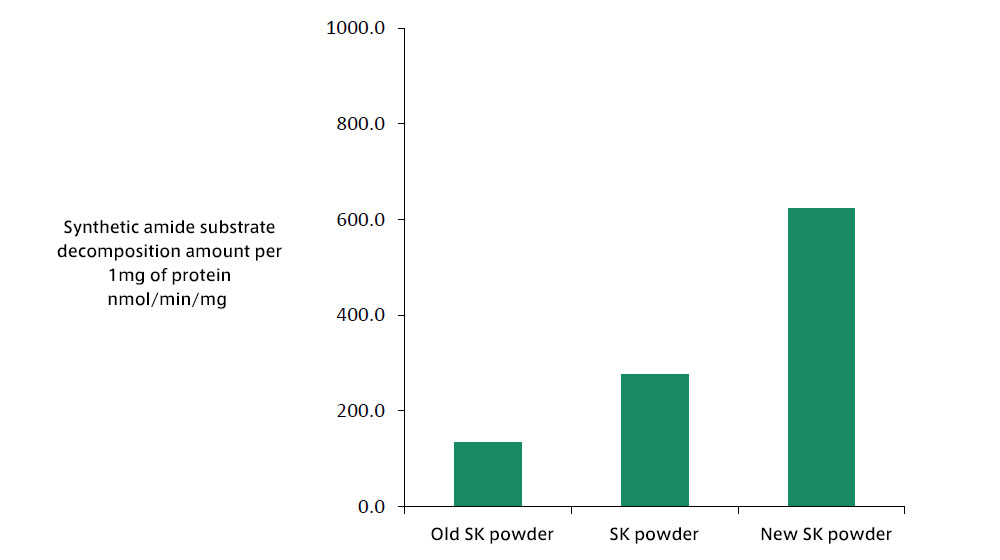
Due to our unique breeding, cleaning and processing methods, fibrinolytic activity can be maintained, unnecessary protein is removed, and specific activity per protein is twice and 4 times better than LR powder.

Fibrin zymography after migrating by polyacrylamide gel per bulk powder
Migration by 12.5% polyacrylamide gel
By separating protein containing earthworm enzymes through enzyme electrophoresis, it can be subdivided by the molecular weight of the protein. When using a special method to process gel migrated by polyacrylamide gel and causing a reaction by layering it on the fibrin plate, fibrin decomposes only in the parts with fibrinolytic activity. Fibrinolytic activity can be seen in the 6 previously reported divisions, and it can be maintained by the breeding - cleaning - processing method without the enzymes breaking (deactivating).

CBB dyeing after migrating by polyacrylamide gel per bulk powder
Migration by 12.5% polyacrylamide gel
Dyeing concentration has reduced in line with technological advances in gel dyeing after protein separation, and protein needed for fibrinolytic activity remains the same while unneeded protein can be removed.